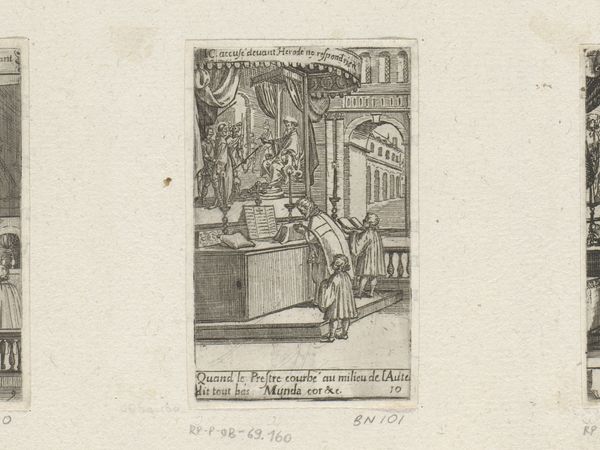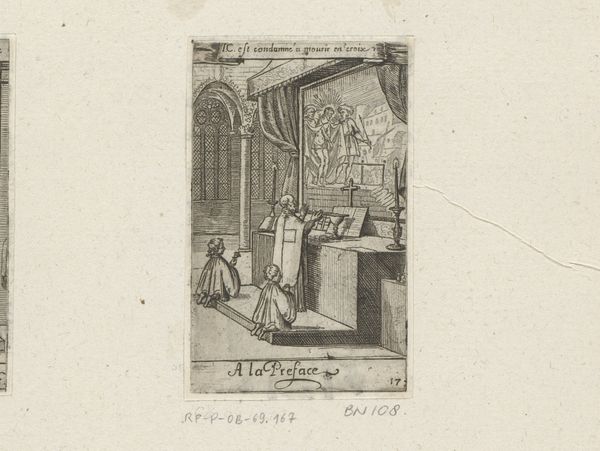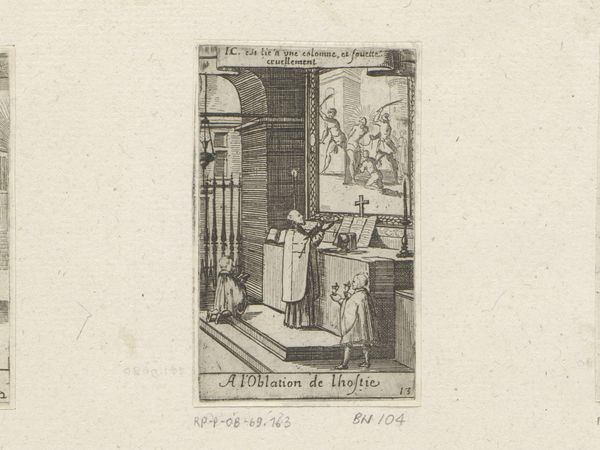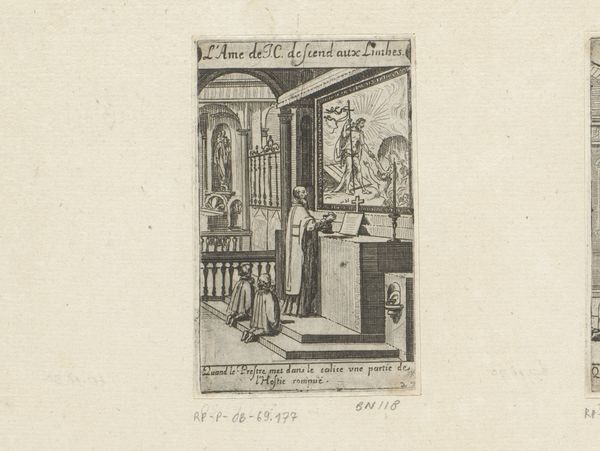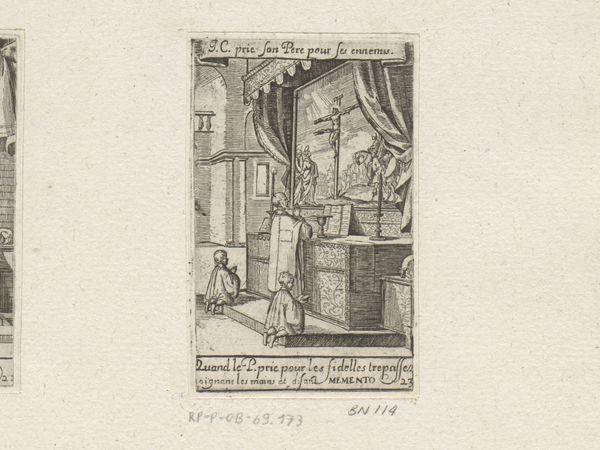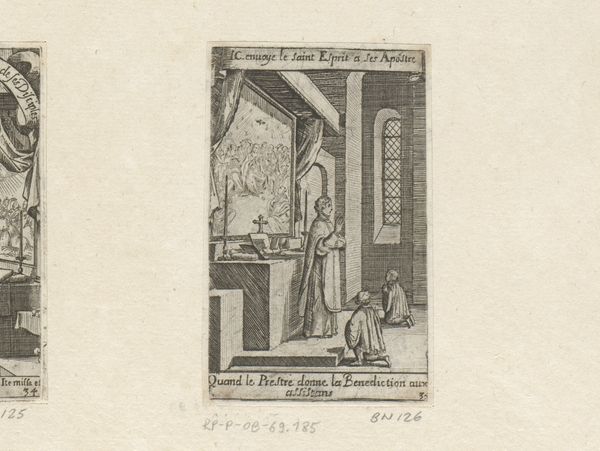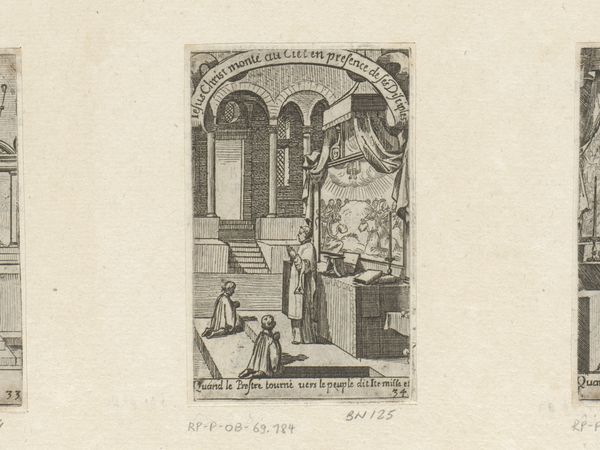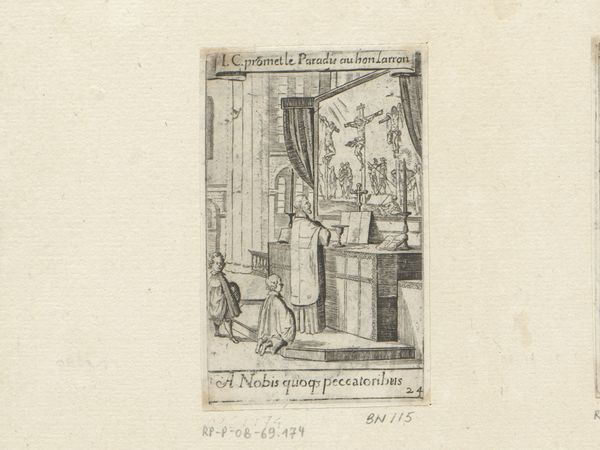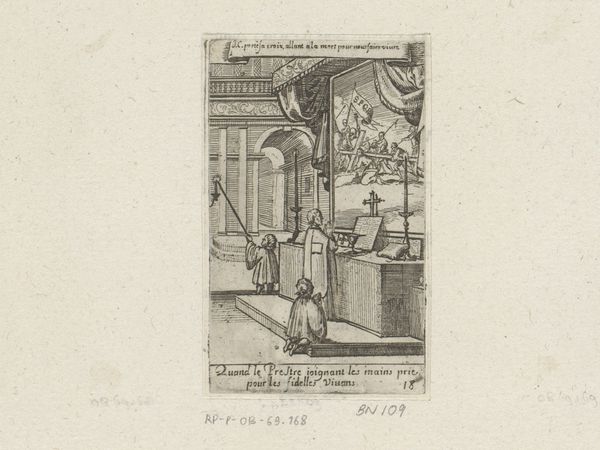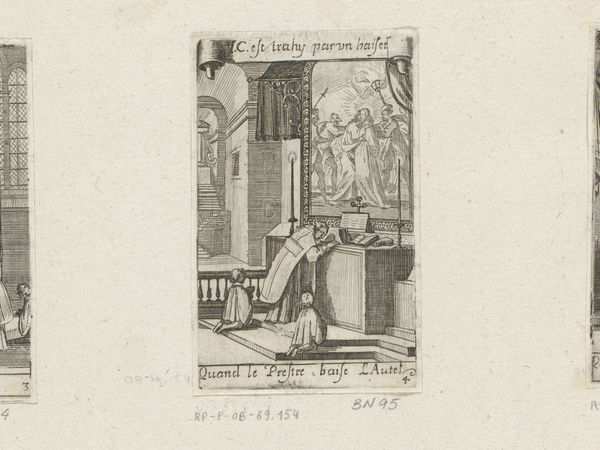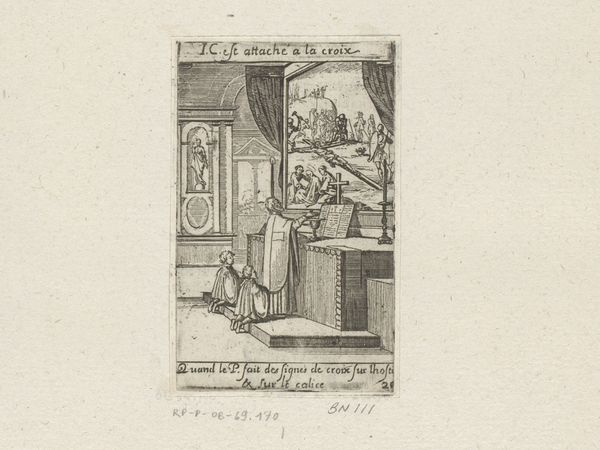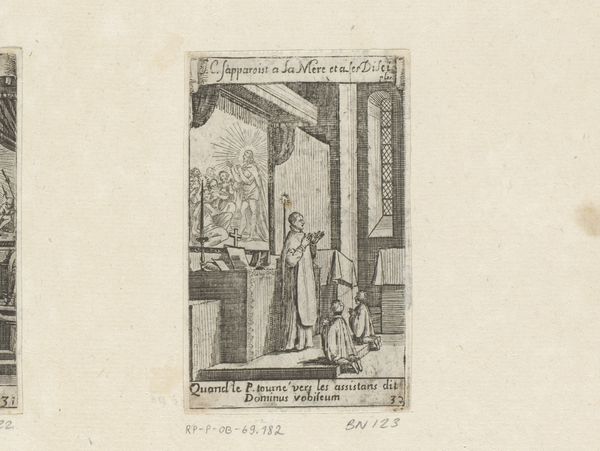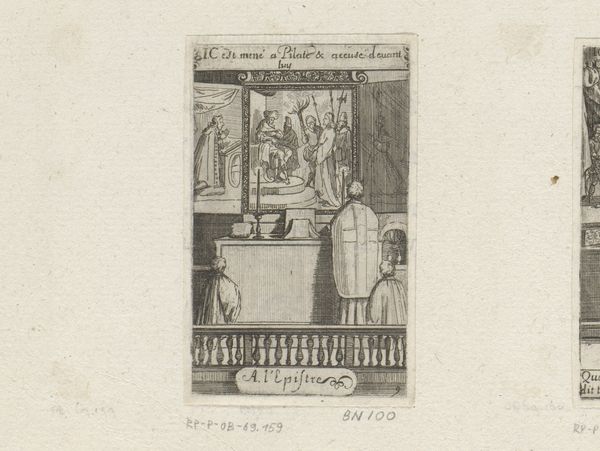
print, engraving
#
baroque
# print
#
history-painting
#
engraving
Dimensions: height 84 mm, width 52 mm
Copyright: Rijks Museum: Open Domain
Curator: This engraving by Sébastien Leclerc I, made in 1661, depicts a priest with two altar boys before an altar. It's held here at the Rijksmuseum. What are your first thoughts? Editor: It strikes me as remarkably intimate, almost secretive. Despite being set within a grand religious space, the scene feels very quiet and self-contained. The small scale and the detail achieved through the engraving enhance that feeling. Curator: Absolutely. The Baroque style, even in print form, uses drama to engage the viewer. The artist clearly captures not just the ritual but also the hierarchical structure inherent within the Catholic Church. Consider the priest, elevated both literally at the altar and socially by his vestments, compared to the kneeling boys. Editor: Yes, that hierarchy is pronounced. It makes me think about how spaces like this church have historically been sites of power and exclusion. Who had access? Who was marginalized? The performance of faith, the visual symbols—all of it reinforces certain power dynamics. Curator: Precisely. Leclerc worked for the court, and engravings like these played a vital role in disseminating religious and cultural norms. The choice of subject matter itself reflects the institutional power of the church at that time, its importance in 17th-century society. It is really well displayed here in the Rijksmuseum as part of its vast history-painting print collection. Editor: And the visual rhetoric… the mural above the altar depicting what seems like Christ carrying the cross—that's not mere decoration. It is a reminder of sacrifice, suffering, and ultimately, obedience to religious authority, reinforcing what being part of faith truly means. I do wonder what kind of audiences engaged with these prints. How might they be interpreted outside the sphere of religious elites? Curator: Those are important questions. Prints, by their nature, had a wider reach, inviting reflection and possibly dissent, regardless of the intentions behind their creation and public consumption. It makes me realize there's still so much more we can unpack from this image. Editor: Indeed. The image might be small, but it holds so many layered narratives around faith, power, and representation in baroque times. Thank you.
Comments
No comments
Be the first to comment and join the conversation on the ultimate creative platform.
